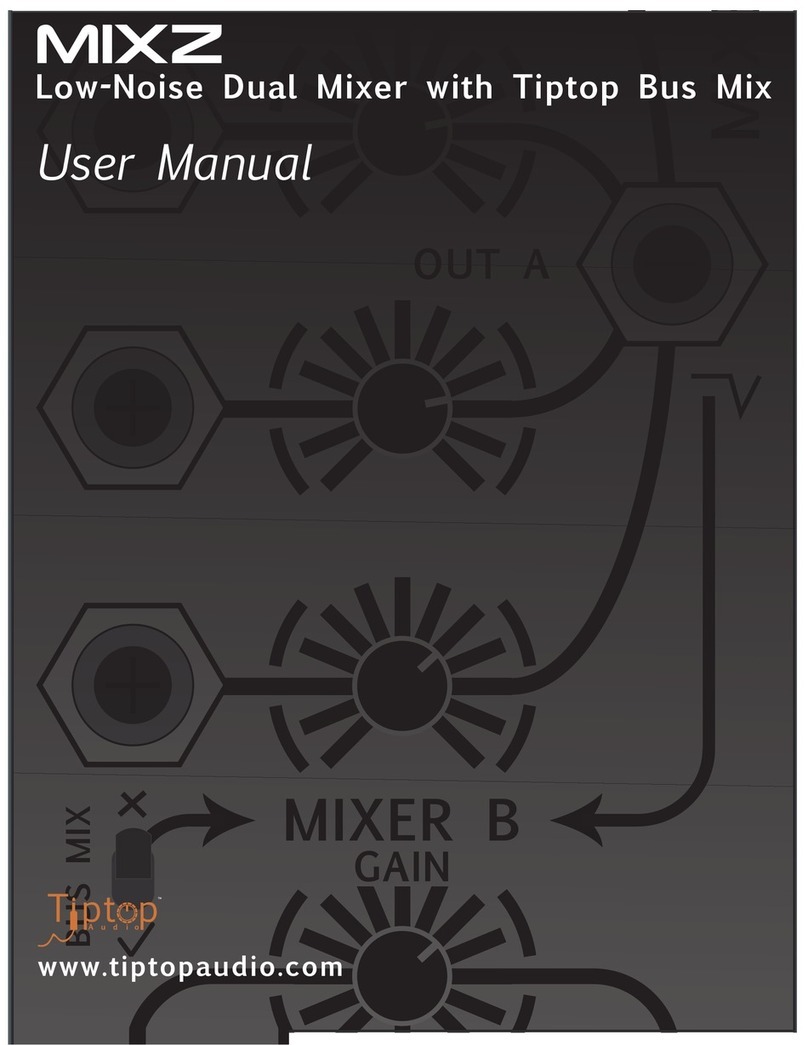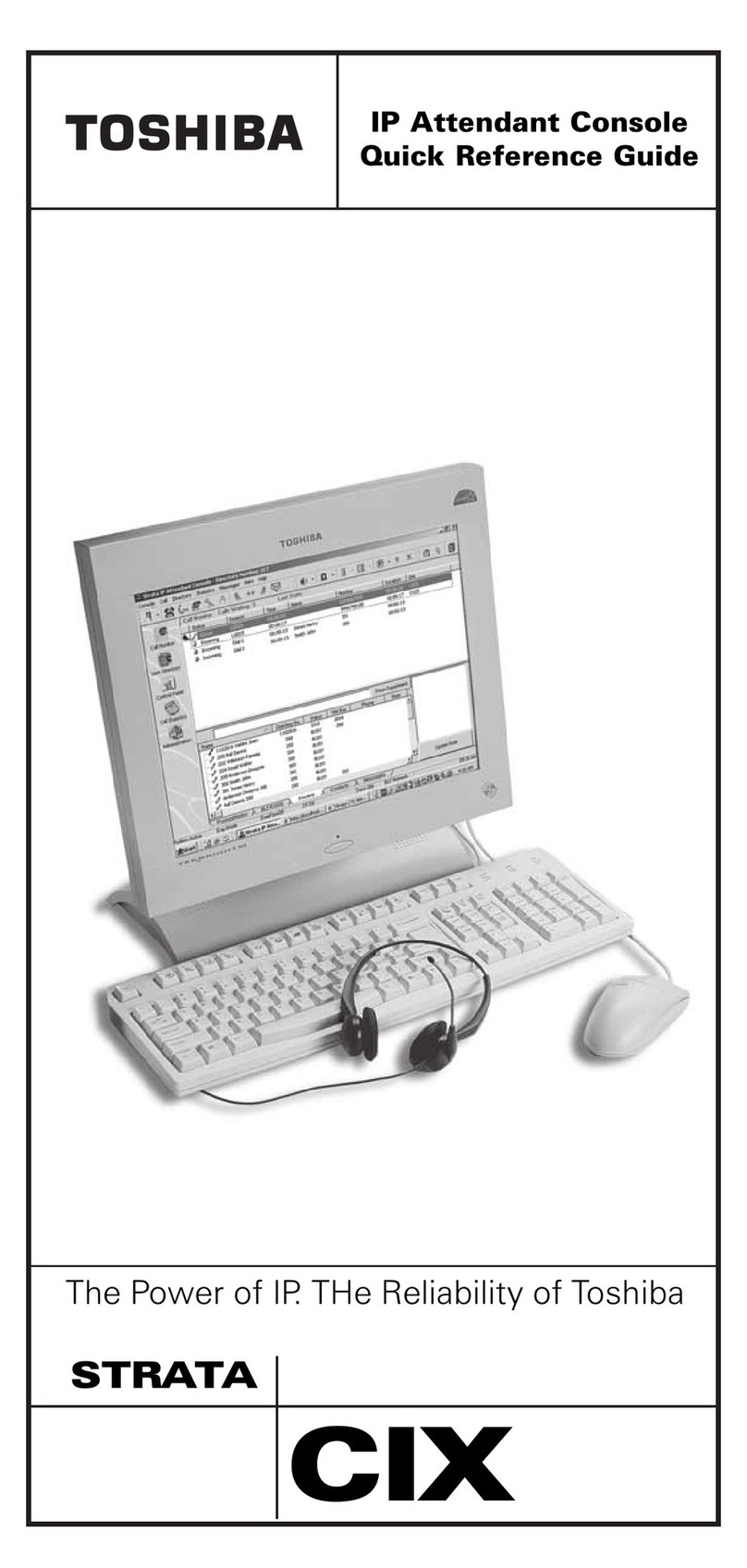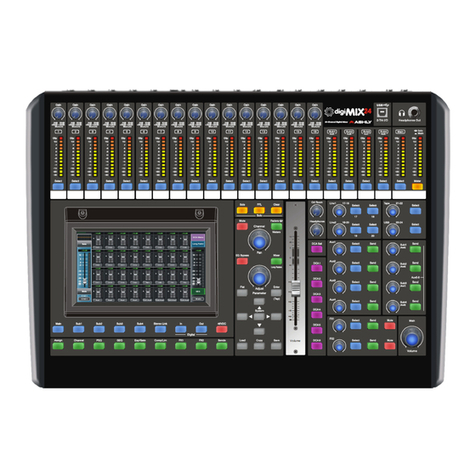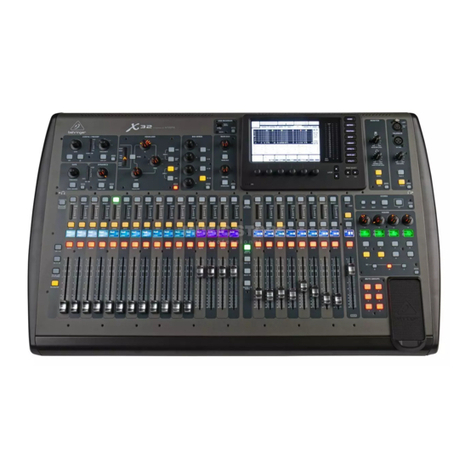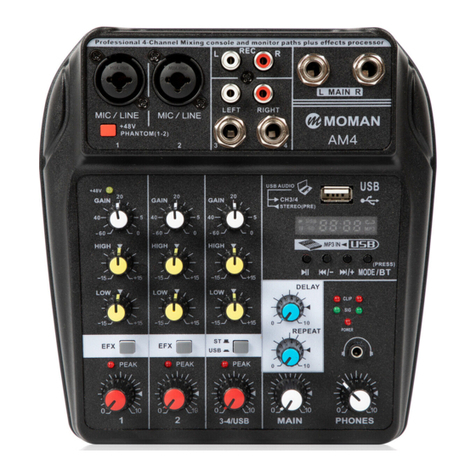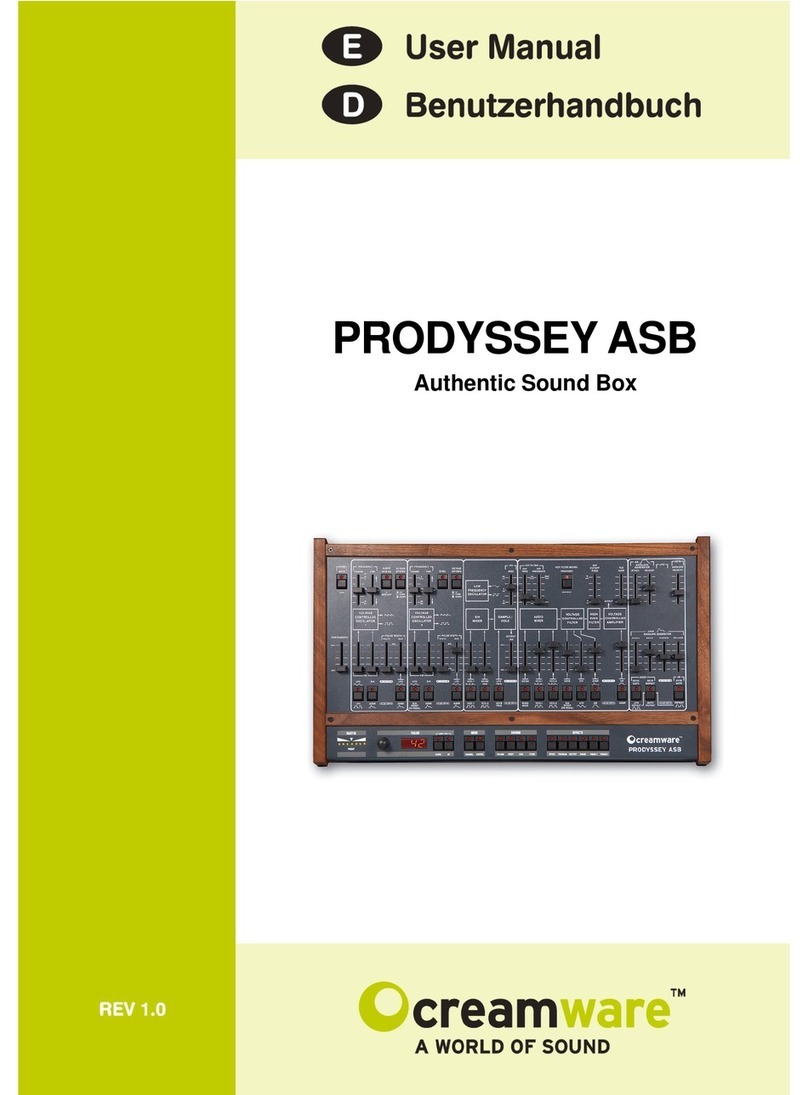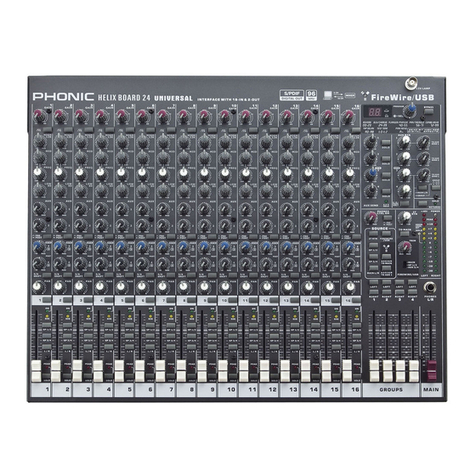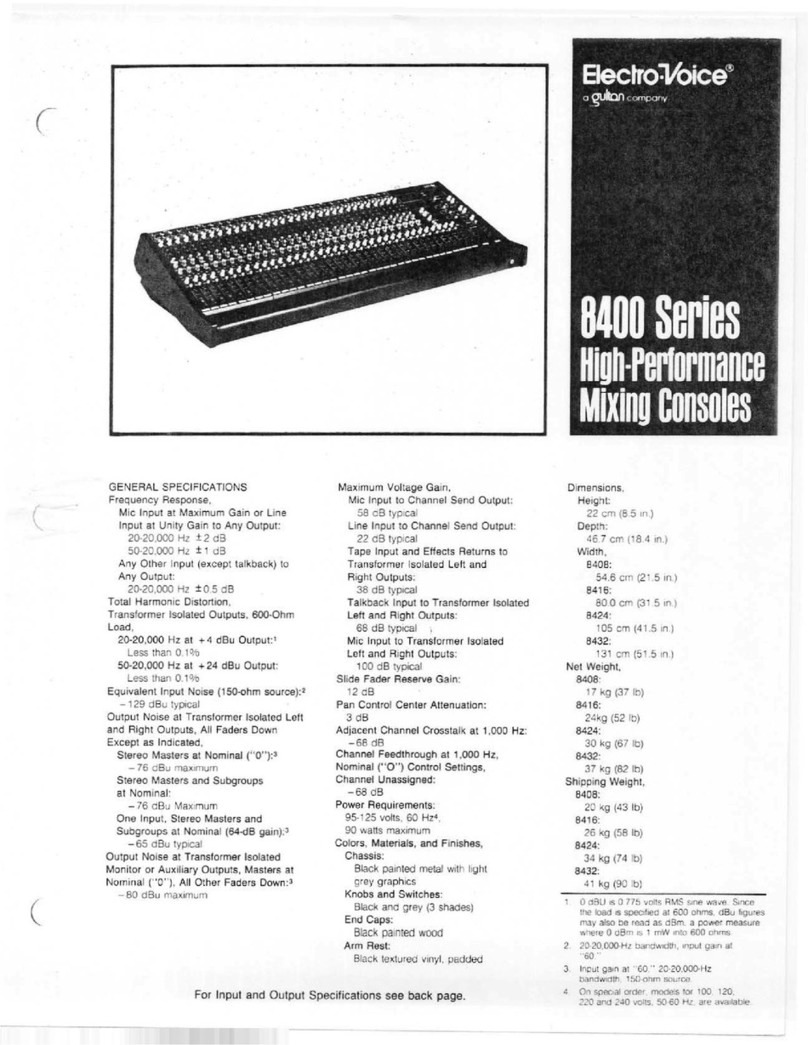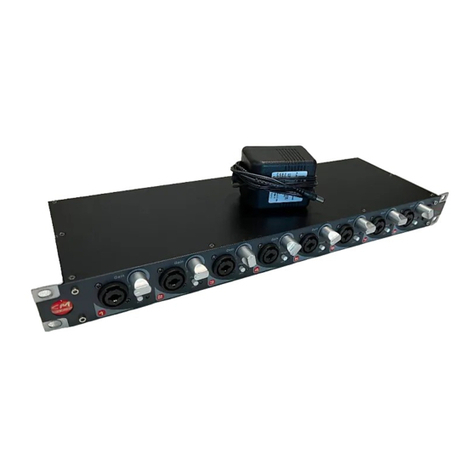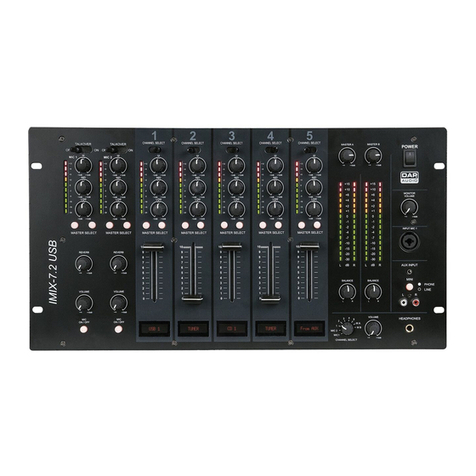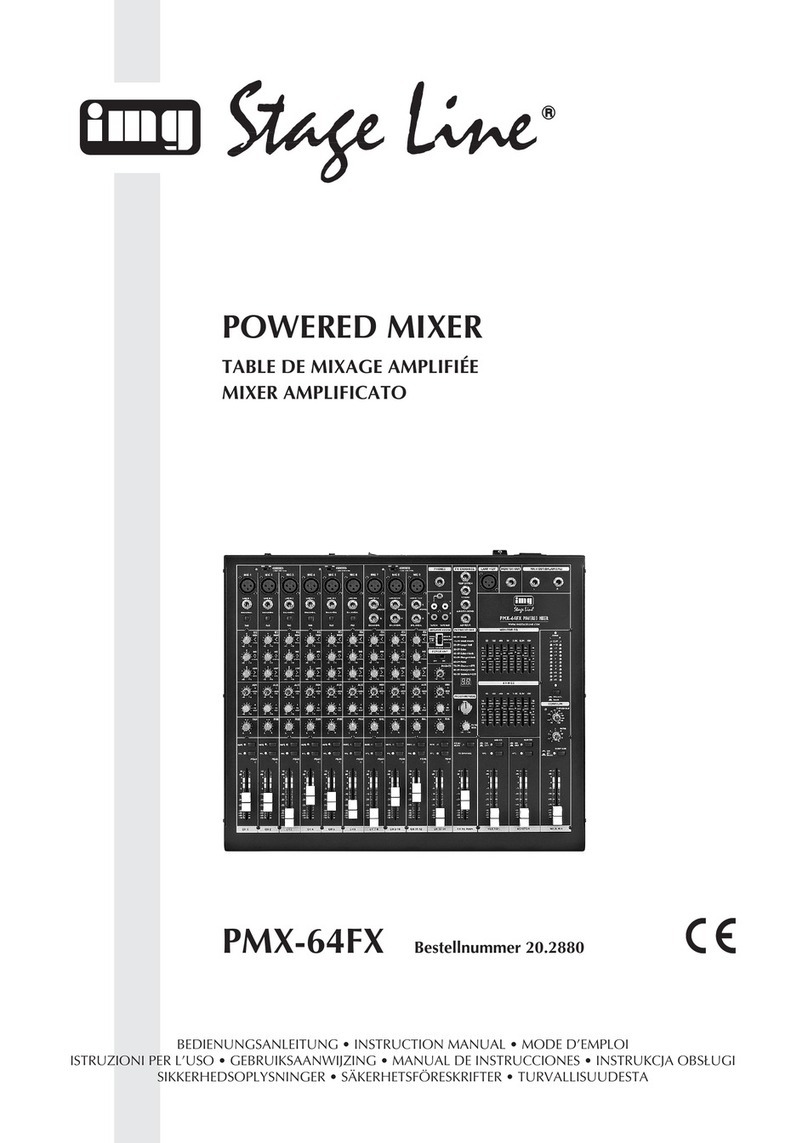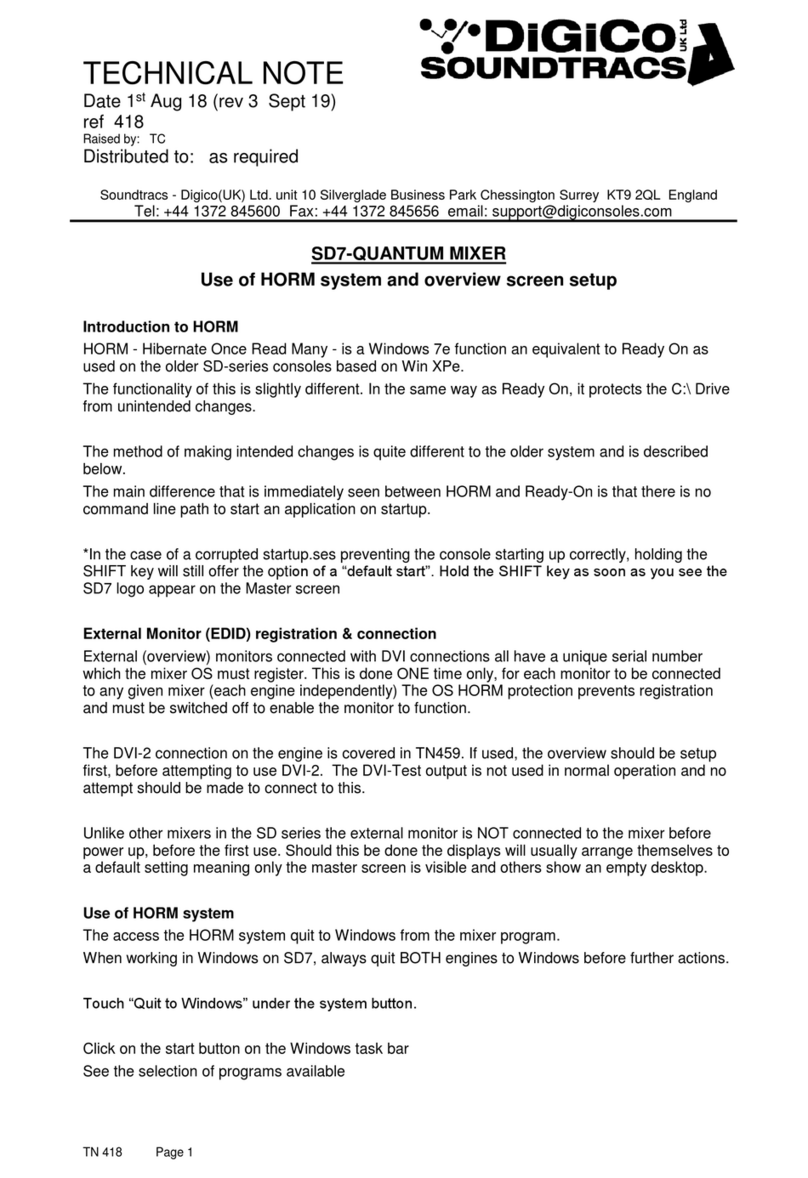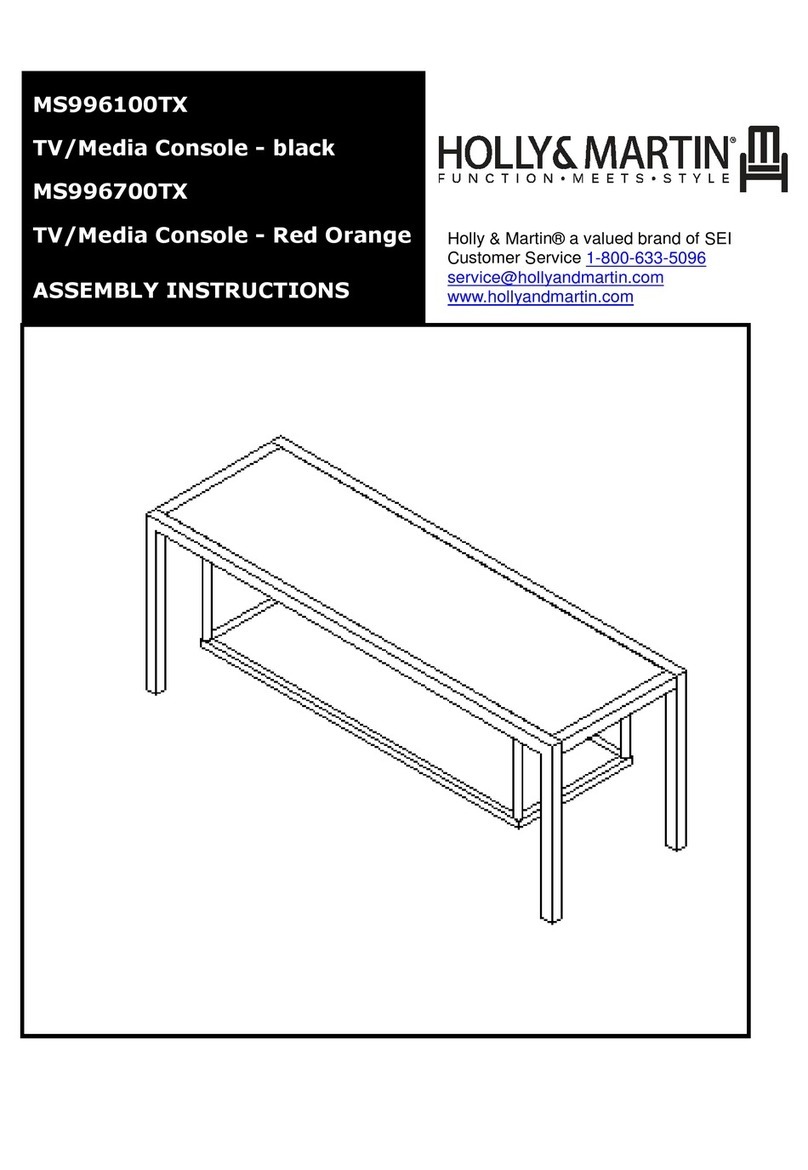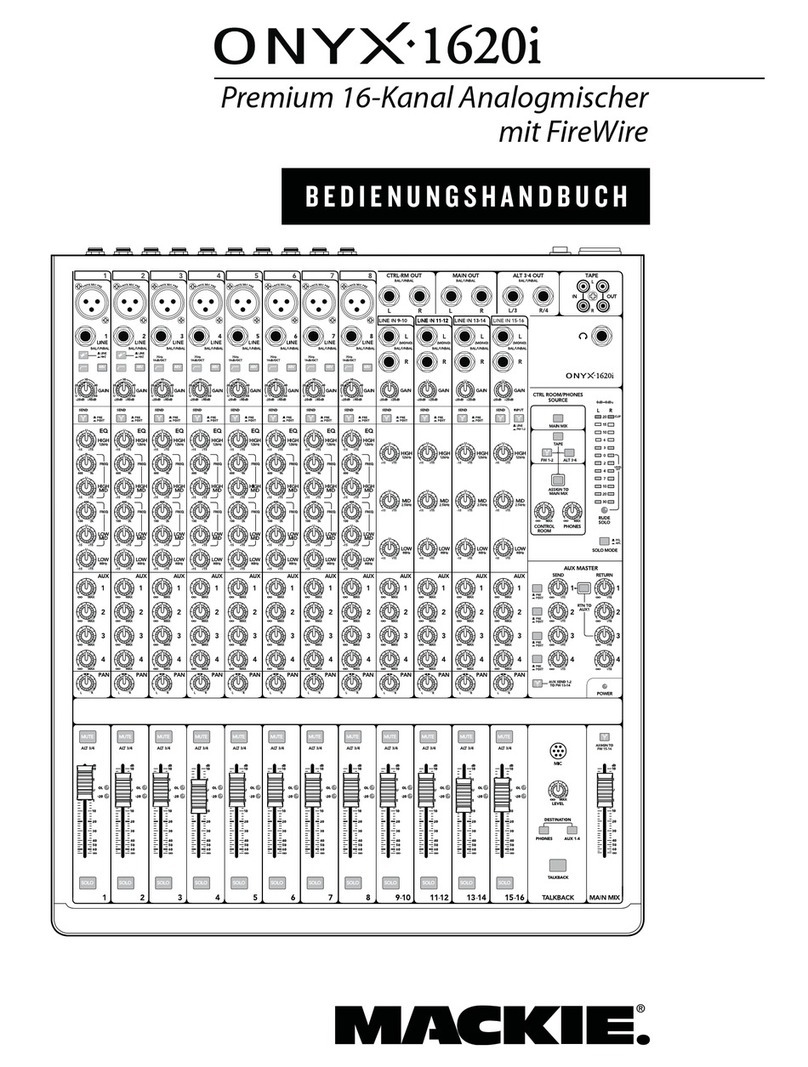Tiptop Audio MIX7 User manual

www.tiptopaudio.com

MIX7
MIX7 is a 7-channel mono summing mixer in Eurorack format that can be used to mix audio, CV,
Triggers or Gate signals. There are two modes of operation that are set by a jumper at the back of
the module.
Unity gain (JUMPER OFF: OUT = IN): The level of each input equals that of the output, what comes
in comes out.
Attenuated gain (JUMPER ON: OUT = 0.4IN): The level of each input is attenuated at the output to
provide more headroom for mixing hot (loud) audio signals without distortion.
The module is shipped in Unity mode, with the jumper o.
MIX7 can be used in multiple ways, so lets get started:
Drum Mixer
Sequence a drum pattern with up to 7 drum sounds, connect the audio output of each drum
module to an input of MIX7. Connect the output of MIX7 to your sound system. Use individual
volume controls on drum modules to set the drums balance.
Mixing Oscillators Waveform
Connect the waveforms from two Z3000’s to the inputs of MIX7. Connect the mix output of MIX7
to your sound system through a Filter like the Z2040. You have just patched the audio part of a
monophonic synth patch.
Mixing Control Voltage Sources
In this example we will need two Z4000 envelopes. Connect the outputs of both to the inputs of
MIX7. Connect the mix output of MIX7 to your Frequency Modulation (FM) input of Z2040 lter.
Now you can modulate the lter frequency with two envelopes.
Mixing Triggers And Gates
Connect the trigger outputs from your Circadian Rhythms or Trigger Riot to dierent inputs on
the MIX7, send the MIX OUT to a Tiptop Audio ONE Sample Player, play with the Mute button on
the sequencers to add and remove triggers from the mix.
Mixing More Than 7 Channels
MIX7 is a summing bus that can be expanded by using two or more MIX7 modules to add
channels. Connect the output of the rst MIX7 to input 1 on the second MIX7. Connect the output
of the second MIX7 to your sound system. Now you have patched a 13-channel mixer.
http://tiptopaudio.com/mix7-analog-summing-mixer

Modes And Jumper Settings
There are two modes of operation that are set by a jumper at the back of the module. With the
jumper set on one pin or none of the pins the mode is set to Unity Gain, this is how your MIX7 is
set by us when shipped to you. With the jumper set on two pins the mode is Attenuated Mode.
On the back of the module the options appear as:
JUMPER OFF: OUT = IN
JUMPER ON: OUT = 0.4 IN
Mode 1 - Unity gain: the level of each input equals that of the output, what comes in comes out.
This is the standard mode typical to modular synthesizer mixers. This mode is transparent with no
added gain and can be used with all type of signals.
Mode 2 - Attenuated Gain: the level of each input is attenuated before it gets mixed to provide
more headroom for mixing hot (loud) audio signals without distortion. This mode should be con-
sidered if you are planning to use MIX7 primarily for mixing hot signals like Tiptop drums and ONE
Sample Player modules, giving you peace of mind knowing there is little chance of clipping the
signals even when the volume levels of the sounds feeding the mixer are high. Mixing of audio
signals with no distortion and clipping is essential for quality mixing, for example when mixing
bass drums. In many cases bass drums are pure sine waves. If these waves are getting clipped, the
bass drum gets added harmonics that change its purity. This can lead to a unintentionally distor-
ted bass drum instead of a well-rounded one. Clipping is indicated by the RED led on the module.
Mode 1 Mode 2
http://tiptopaudio.com/mix7-analog-summing-mixer

Processing Drums In Groups
By using two or more MIX7 it’s easy to create ''subgroups''. Subgroups are used to process groups
of dierent sounds simultaneously. For example you can mix bass drums, toms and snare
together using one MIX7 and Hi Hats and cymbals using another MIX7.
1. Connect the output of the rst MIX7 to a High Pass input on Forbidden Planet and the
output of the second MIX7 to a delay.
2. Connect MIX7 outputs to the inputs on a third MIX7.
3. Connect the output of the third MIX7 to your sound system.
Now you have split your drum sounds into two separate processing groups: High-Pass lter
on low and mid-range drums and delay on cymbals and hi hats. This is a typical workow
of signal routing and sound design inside the modular.
Mixing Oscillator Waveforms
1. Tune your Z3000 oscillator to a nice bass frequency.
2. Connect square wave to input 1 on MIX7.
3. Connect sine wave output of a second Z3000 tuned one octave lower than the rst to
channel 2 of MIX7.
4. Connect mix output of MIX7 to the input of Z2040 lter.
5. Connect the output of Z2040 to your sound system.
Now you have a square wave tone reinforced by a sub bass sine wave that you can lter to
taste.
A variation on the patch described above.
1. Tune your Z3000 oscillator to a nice bass frequency.
2. Conne.ct square wave output to the input of Z2040.
3. Connect the output of Z2040 to input 1 on MIX7.
4. Connect sine wave output of a second Z3000 tuned one octave lower than the rst to
channel 2 of MIX7.
5. Connect mix output of MIX7 to your sound system.
Now you have a square wave tone that you can lter to taste reinforced by a sub bass sine
wave that is ltered separately.
http://tiptopaudio.com/mix7-analog-summing-mixer

Mixing Control Voltages
1. Connect saw wave output of Z3000 to the audio input of Z2040, connect the output of
Z2040 to your sound system.
2. Connect the output of Z4000 ADSR envelope to input 1 on MIX7.
3. Connect the output of a second Z4000 to input 2 on MIX7.
4. Connect the output of a third Z4000 to input 3 of MIX7.
5. Connect the 16 step output of Z8000 to input 4 of MIX7.
6. Connect the mix out of MIX7 to the frequency modulation input of Z2040.
Trigger the 3 envelopes from 3 separate tracks of Circadian Rhythms, clock Z8000 from the
main Circadian Rhythms clock output. Now run the sequence. By creatively arranging your
gate patterns that trigger the envelopes and mixing in modulation sequence you can
create very interesting modulation patterns.
Connect The Sound Of Your Mobile Phone To Your Modular
MIX7 can even be used to amplify a weak signal. It’s not the ideal way of doing that, but what hap-
pens if you don’t have a dedicated amplier module handy? Use Stackcables to send your phone
audio to all 7 inputs on MIX7, (make sure MIX7 is set to UNITY MODE). MIX7 has now multiplied
the gain of your phone by 7, making it usable for use in the modular.
http://tiptopaudio.com/mix7-analog-summing-mixer
Table of contents
Other Tiptop Audio Music Mixer manuals
